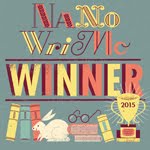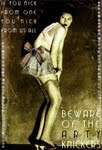 Kurt Schwitters
Kurt SchwittersSchwitters had a knack for the found object, and a sense of symmetry rarely seen so consistently among other collage artists. His work exhibits a simplicity with a force that draws one into the canvas.
Another artist I have come to admire, Fred Otnes, offers a different perspective, one that exhibits a more recognisable figurative approach but retains the integration of design with materials.
It's my intention to explore and use materials I have neglected but can easily be adapted to altering and are frequently used in collage: gouache, ink, watercolour and various acrylics.
I have pounds of paper, including imported textured papers from Thailand, Japan, Mexico and Germany. I have hoarded these too long and if not used they will only get mildewed or deteriorate.
Two excellent books on collage I explore are Gerald Brommer's "Collage Techniques: A Guide for Artists and Illustrators " and Anne Brigadier's "Collage: A Complete Guide for Artists " , both are timeless and worth their weight in geld.










No comments:
Post a Comment